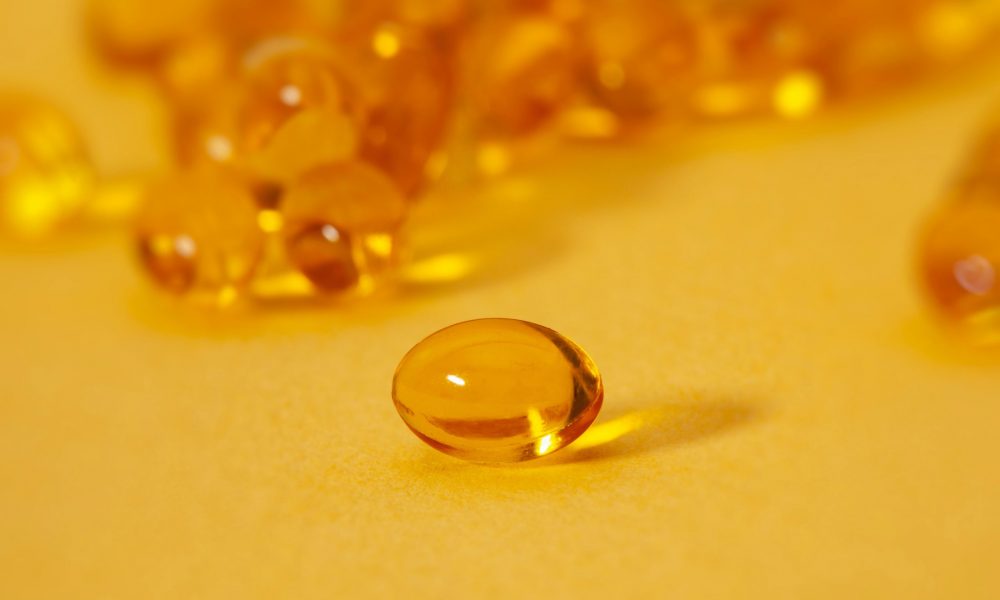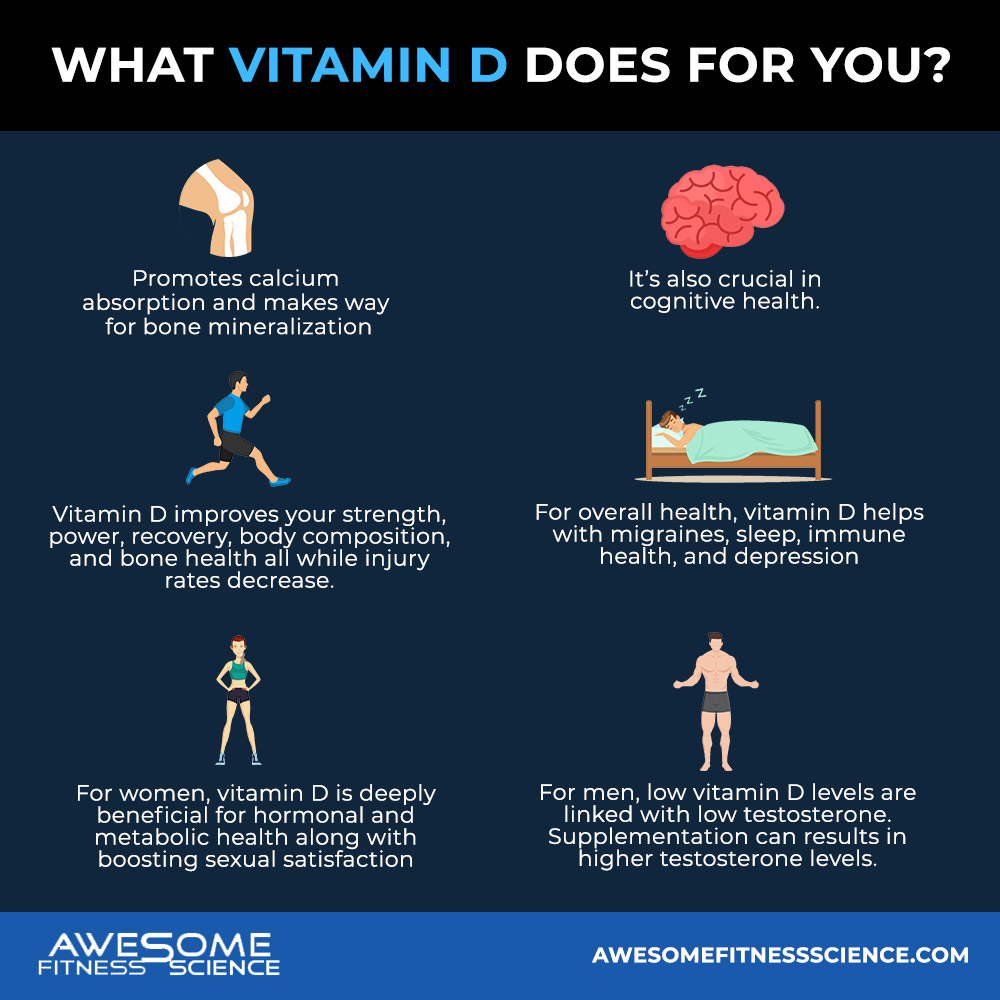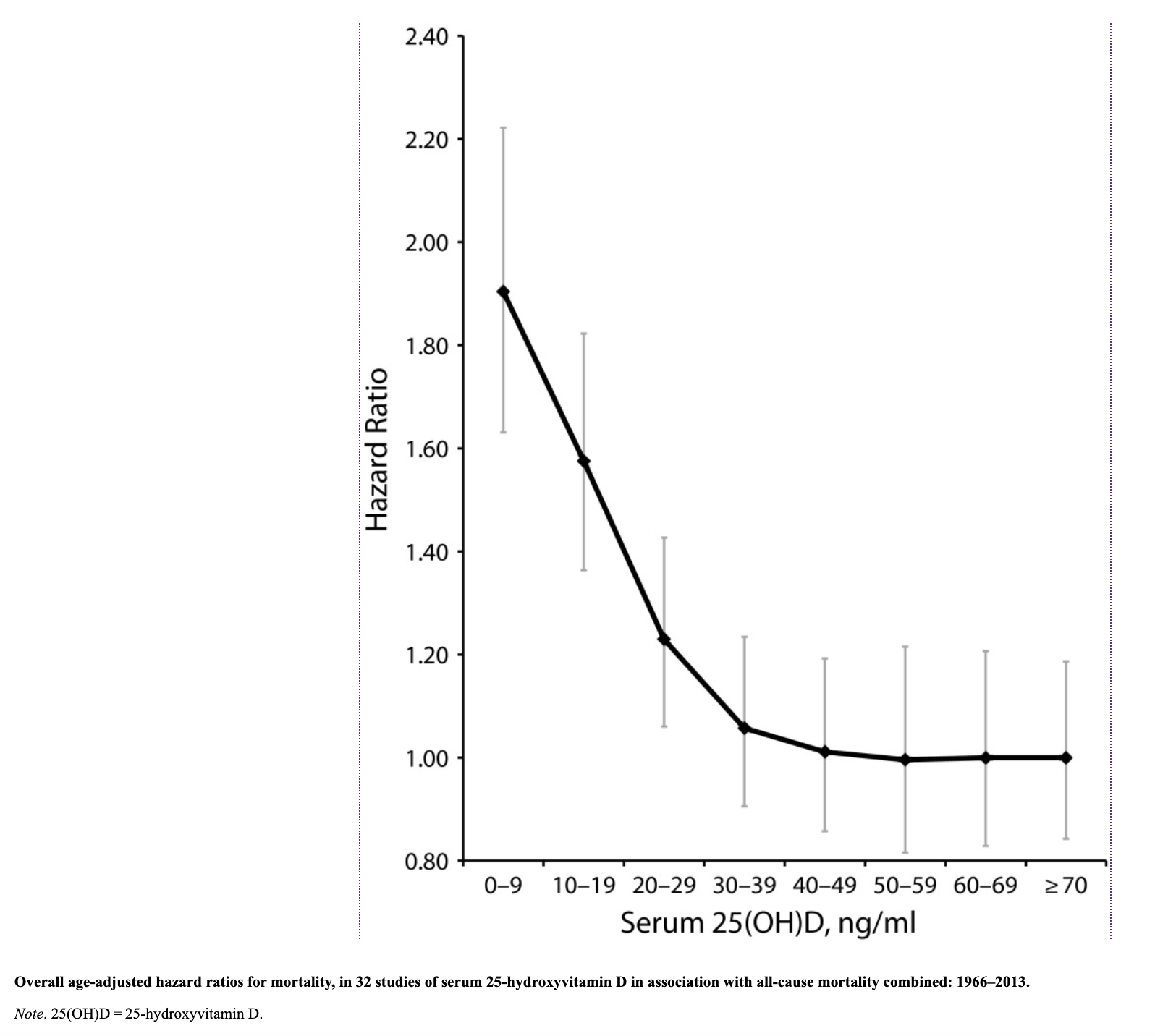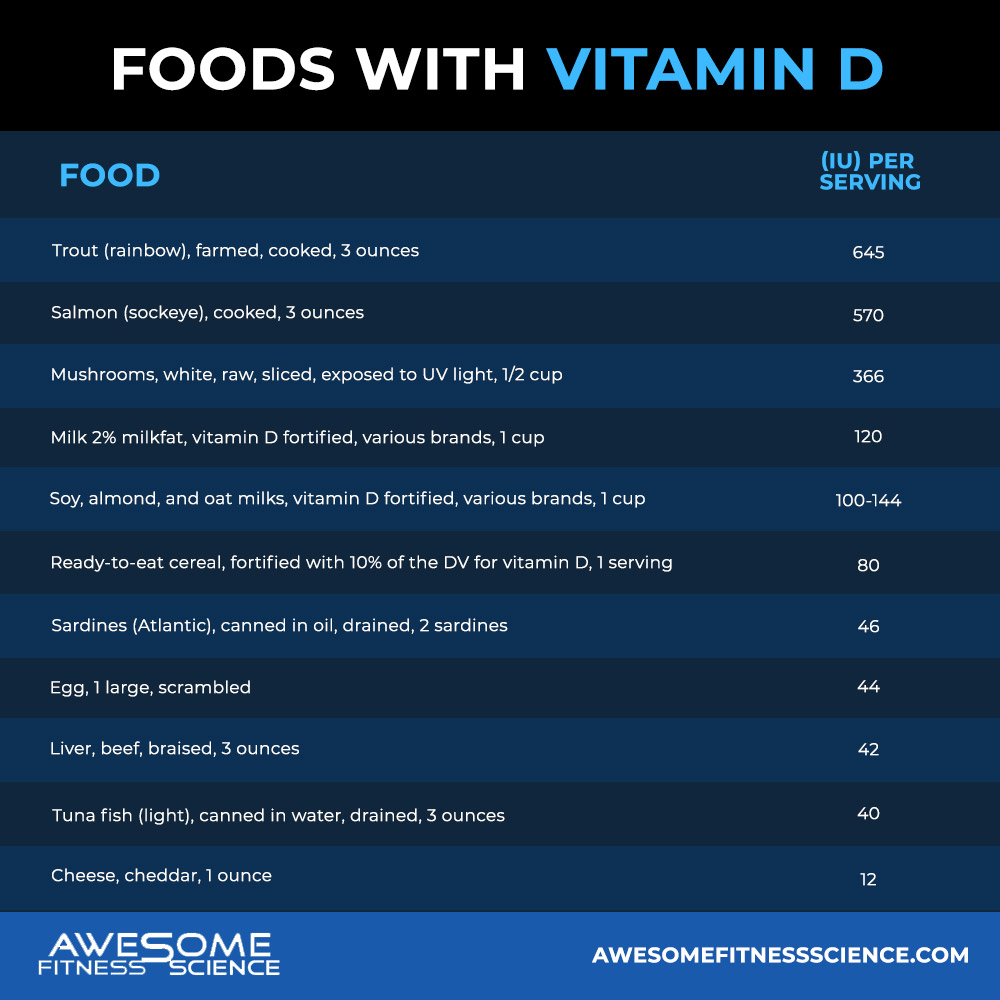
Dairy – A Healthy Choice That Idiots Don’t Realize
Dairy – A Healthy Choice That Idiots Don’t Realize Dairy is extremely misunderstood and often picked on by the vegan and paleo communities. Many people

It’s quite common for people to drop hundreds of dollars every month on trendy supplements in search of being a stronger, healthier, and more athletic specimen with a raging sex drive.
Well, most of those supplements shine at burning money from your bank account. However, vitamin D stands above the rest. I would potentially argue that Vitamin D is the king of supplements.
Everyone should be taking it as it provides endless relevant benefits, not to mention nearly everyone and their moms are deficient.
Vitamin D is a fat-soluble essential nutrient. It’s unique in that you can obtain it orally or through sunlight, particularly UVB rays when UV index is above 3. Well technically, the sun doesn’t give you vitamin D. Rather, in optimal sunny conditions, your body’s cholesterol produces the active form of vitamin D on it’s own.
This form is called 1,25- dihydroxycholecalciferol or cholecalciferol (D3). Same with food and supplements, vitamin D is essentially dead until your body converts it and makes it usable (1). This is also why Vitamin D is called a steroid precursor which relates to the hormonal benefits of it, which I’ll talk about in just a sec.
Quite literally, there’s almost nothing Vitamin D can’t do. Vitamin D promotes calcium absorption and makes way for bone mineralization. It’s also crucial in cognitive health, muscular strength, exercise performance, immune function, and testosterone production.
In fact, if you’re active, you can’t afford to not take vitamin D. Your strength, power, recovery, body composition, and bone health all improve while injury rates decrease (2-8).
For overall health, vitamin D helps with migraines, sleep, immune health, and depression (9-14).
For men, low vitamin D levels are linked with low testosterone (15). Supplementation results in higher testosterone levels (16)
For women, vitamin D is deeply beneficial for hormonal and metabolic health along with boosting sexual satisfaction (17,18).

Currently, public health authorities have a recommended dietary allowance (RDA) of 600-800 IU per day. This is laughable because most experts would agree that your bloodwork should reveal vitamin D levels of at least 25 nmol/L which you’d never reach consuming a few hundred IU per day.
Even this is a conservative target though (20). Your chances of death continue to drop up to blood levels of 50 nmol/L (21).

Deficiency can be as high as 80% in some populations (22). This is especially true for people who live in low sun areas, have dark skin, or use sunscreen (22-26,39).
In fact, people living in sunny areas don’t always get enough vitamin D. The sun angles and clothing can prevent your body from producing sufficient vitamin D from the rays (27,28).
Athletes may even require more vitamin D (29). Athletes training for hours in the sun are surprisingly, still deficient (30)
So sure, the RDA of 600-800 IU might keep you alive, but billions of people are simply not getting enough vitamin D to thrive (31). Usually, these recommendations are wienie suggestions to prevent vitamin toxicity, but getting too much vitamin D is rare and difficult.
Toxicity only occurs when taking over 20,000 IU per day for long periods which you’d have to be an idiot to do (32). Up to 10,000 IU is generally safe.
Furthermore, Vitamin D is stored within the body and your body can destroy excess (34,35). So sure, you can overdo vitamin D just like you can overdo anything in life, but too much is not often the concern. Getting too little is.
Most people need 4000-8000 IU per day to reach adequate or thriving levels of vitamin D (36,37). Breastfeeding mothers may need more (38).
Furthermore, bigger people should lean towards the higher end due to having more surface area (40). Same with obese people because their vitamin D absorption is diminished (41).
While the sun provides your body a means to produce vitamin D, you’ll get nowhere enough unless you get a significant amount of full body exposure for at least 30+ minutes per day which probably isn’t great for your skin aging (52,53).
So relying on the sun isn’t ideal, but food isn’t much better. Despite what you might hear, there’s no food that provides a substantial amount of vitamin D.

Eating a whole food diet will help you get more vitamin D, but it’s likely strong enough.
Your multi-vitamin isn’t cutting it either because an expensive one might have 1000 IU at most.
So when I say everyone needs to supplement with a vitamin D supplement, that’s not clickbaity one liner. That’s a legit suggestion. How much should you supplement?
I heard there’s a rule somewhere that unless you’re a medical professional, you can’t recommend more than 4000 IU. I’m too lazy to look it up and I don’t want to get in trouble, but I’m held accountable to the truth that weak spined experts are too chicken to take seriously.
So I’ll tell you what I and many of my clients take off our own will. But anyways, I personally take 5000 IU per day. That should be a good rule of thumb for most people, but like I said, you didn’t hear it from me.
Anyways, due to vitamin D’s nature, if you miss a day, you can make up for it by taking extra the following day. Some people even load up on tens of thousands of IU per week or month, but research finds it’s generally more beneficial to take it daily (42).
The form you want to take is D3 not D2. I don’t even know why D2 even exists. It’s trash and doesn’t absorb as well (43-49).
Additionally, you should get your vitamin D3 in the soft gel form because they usually have a little oil inside. While fat is not necessary for Vitamin D supplements to raise your levels, it does increase it’s absorption by about 15-30% (50,51).
So, supplementing vitamin D with a meal containing fat is best. It doesn’t have to be a super high fat meal as 11 grams of fat is sufficient for max absorption (50).
Other supplements are like your ex. They promise big things, but fall flat. However, vitamin D is a match made in heaven. There’s nothing that vitamin D can’t do. You should still get vitamin D from sunlight and from food, but to reach thriving levels, you’ll have to supplement.
If I was a sellout, I would now mention my coupon code for some overpriced version, but any vitamin D3 soft gel on Amazon should be good. If you want the exact brand I use where I buy a year’s supply worth for cheap, you can email me ([email protected]).
Bikle, Daniel D. “DEFINE_ME.” Cell, www.cell.com/cell-chemical-biology/fulltext/S1074-5521(14)00024-6.
Sign up for AwesomeFitnessScience Weekly. You’ll get juicy insider secrets, updates, and stories.

Dairy – A Healthy Choice That Idiots Don’t Realize Dairy is extremely misunderstood and often picked on by the vegan and paleo communities. Many people

When somebody claims organic food to be better, that’s a good sign they are clueless about nutrition science and get their nutrition information from dorks on social media.

Think of your most stubborn muscle group that’s so painfully small despite how hard you train it. Perhaps, it’s your narrow back, your chopstick calves, or your flat butt.